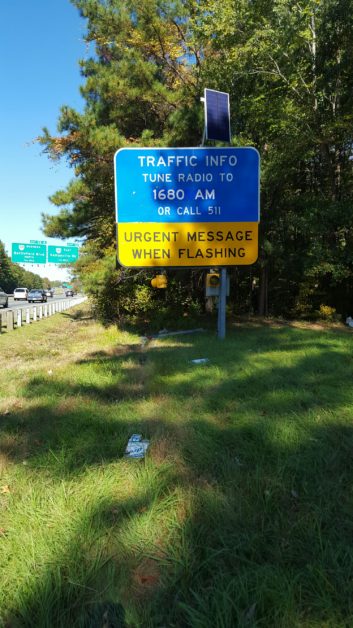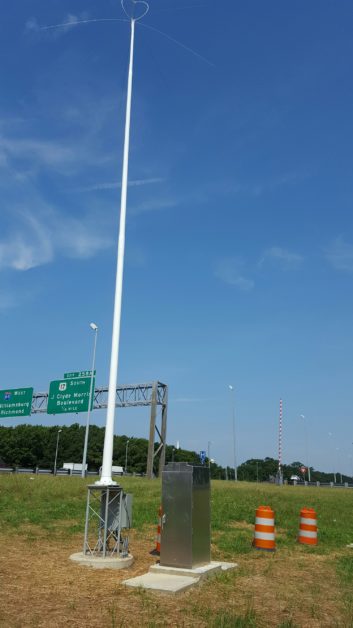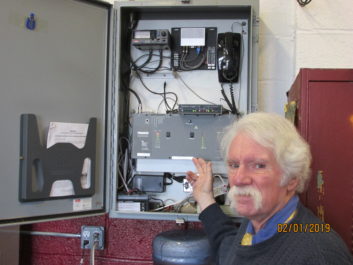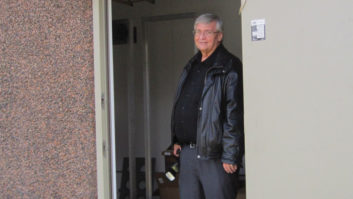
Back in 1977 — before the Sony Walkman and compact discs, back before the internet, as we know it, existed — the FCC authorized the creation of Travelers’ Information Stations, also dubbed Highway Advisory Radio stations by some departments of transportation.
Licensed in the AM band (530–1700 kHz) with a power limit of 10 watts and typical coverage radius of three to five miles, TIS was intended mainly to provide motorists with vital (live and recorded) information about local road and traffic conditions; hazards and travel advisories; and lodgings, rest stops, service stations and local points of interest. Ads and music were forbidden. In emergencies, local authorities could use TIS stations to broadcast evacuation routes and other life-saving news.
Today, when drivers can access real-time traffic, news and weather on our smartphones, TIS might seem as technologically relevant as VCRs and 8-track players. Anecdotal evidence suggests that some states operate fewer TIS transmitters than in the past, and at least one state plans to turn off its last systems.
Yet TIS stations remain popular with states, local governments, parks and government agencies that want to keep operating them. And advocates say the systems can provide an important safety channel for times when other networks fail.
THEY LIKE TIS
To assess how TIS operators feel about their stations, Radio World contacted a number of state departments of transportation. We heard back from Caltrans in California, MDOT in Michigan, TDOT in Tennessee and VDOT in Virginia.
Caltrans “operates 201 HAR stations in 10 out of 12 of our Caltrans districts,” said Matt Friedman, Caltran’s senior transportation planner and lead for traveler information. (Caltrans District 4, serving the San Francisco Bay Area, has the most with 64 HAR stations.) “HAR stations are often used to provide information about road closures and areas of chain control during normal operations as well as emergencies,” he said.
Michigan operates three TIS stations, one at the Blue Water Bridge international crossing at the Canada-U.S. border, two at the Mackinac Bridge that links the peninsulas and have been in operation for more than 30 years.

“This is a supplemental means of relaying basic information regarding the customs crossing into Canada — toll rates, et cetera — along with emergency notifications,” said Collin Castle, MDOT’s ITS program manager, about the Blue Water location.
In Tennessee, TDOT operates 57 AM transmitters and 146 static signs with information to tune into regional frequencies for traffic information when beacons are flashing. “Information may include traffic, weather, Amber alerts and emergencies,” said Ray Hallavant, TDOT’s traffic management center operations coordinator.
Caltrans has no doubt that TIS remains relevant to motorists. “We know that the Highway Advisory Radio is an essential tool because not all of our customers have access to other tools while they are driving such as social media and our QuickMap app,” said Friedman. “We receive regular feedback that customers rely on this tool while they are travelling.
 “The benefits to using TIS allow us another method of communication to the public and motorists who can listen to messages without being distracted from driving by a device,” he added. “There are some areas of the state where commercial radio coverage is very spotty, such as the Sierra Nevada mountain range, and a HAR station can provide a way to communicate information to motorists in those areas.”
“The benefits to using TIS allow us another method of communication to the public and motorists who can listen to messages without being distracted from driving by a device,” he added. “There are some areas of the state where commercial radio coverage is very spotty, such as the Sierra Nevada mountain range, and a HAR station can provide a way to communicate information to motorists in those areas.”
This is why, even in the internet age, “There are no plans to discontinue the HAR program” in California, Friedman said. “Many of the transmitters are approaching the end of their service life and are due for an upgrade. We are hoping to get them replaced in the near future.”
Michigan sees a similar value to TIS in 2019. “The messages that are relayed continue to be of use to the motoring public,” said Castle. He noted that TIS costs little to maintain and “allows for a longer message to be relayed than what could be shown on a dynamic message board; you are getting the message out to a wider range of communication than you normally would with a sign needing to be viewed by line of sight.”
The state plans to maintain its TIS stations. “As long as this technology continues to be a beneficial tool for the dissemination of information to the motoring public regarding the crossing, we will continue to support this as a resource for the state of Michigan,” Castle said.
Since 2016, Tennessee has based its TIS decisions on a continuing online driver survey at www.tn.gov. According to the most recent data, 41 percent of drivers surveyed use TDOT’s TIS service. About 6 percent said the TIS offered “great assistance,” roughly 10 percent chose “moderate,” 15 percent “little assistance” and 11 percent said none.
As far as the state is concerned, this response level is sufficient to justify continuing TIS and improving it over time. That said, “TDOT will consider any technology that will provide the best information resources for Tennessee roadway users,” said Hallavant.
SHUTTING DOWN
Virginia used to have TIS stations across the state but has since shut all of them down except for one: the eight-transmitter TIS on 1680 kHz that serves the Hampton Roads Bridge Tunnel and connected roads.
In the past, Advanced Traffic Management System information was fed by VDOT’s Hampton Roads Regional Traffic Operations Center into the TIS stations’ server as recorded audio and as data into the state’s roadway message boards.

“In recent years, through a state contract, VDOT has phased in a common statewide ATMS in four of its five Regional TOCs to streamline its operations,” said VDOT Communications Manager Holly A. Christopher.
“Hampton Roads VDOT, currently operating on an independent system, is the last to enter into this statewide network, which is a cloud-based system that increases control center interoperability. This means that should something happen in any one of the TOCs, another TOC will be able to provide continuity of operations.”
The downside: “This statewide network does not support HAR, which has already been discontinued in the rest of the state districts as the new communication system was phased in,” said Christopher. “As a result, the HAR station was discontinued at 9 p.m. on Sunday, Jan. 6, 2019.”
This shutdown didn’t last long: “As a combined result of motorist feedback and a delay in the installation of the new statewide communications software, the Virginia Department of Transportation is extending the operation of HAR in Hampton Roads,” Christopher said. The station resumed operation at 8 p.m. on Tuesday, Jan. 8, and will stay on the air while the state waits to install the new ATMS, now expected in late spring.
“During the extension, VDOT will explore alternative opportunities to provide hands-free options for motorists to receive travel updates,” Christopher said. “These alternatives have not yet been identified.”
Bill Baker is an observer with a particular interest in the subject of TIS. He owns Information Station Specialists in Michigan, a long-time supplier of such systems, and he is a director with the American Association of Information Radio Operators.
“I had read that VDOT had announced they were stopping the 1680 service but listeners/travellers who use it balked, and so they are going to continue it for now,” he said.
But Baker believes TIS remains a critical service. “Because the ‘internet age’ also corresponds with the age of tenuous communications during an emergency, these stations are more valuable than ever to their host communities, airports, national parks, federal agencies and military bases.”
Baker wrote in a commentary in Radio World last fall that the value of TIS was bolstered recently when the FCC clarified that local officials have authority to broadcast emergency information directly to citizens on these stations, and that determination of content lies entirely with public safety officials in charge of incidents. The commission also relaxed bandwidth restrictions on the TIS service from 3,000 to 5,000 Hz.
As a result, he said, more stations are finding use for community safety purposes. He believes that it is local emergency managers, fire officials, broadcast engineers and amateur radio operators who collaborate to make TIS radio stations function for communities that may find themselves in harm’s way.

CASE STUDY
North Plainfield is a pleasant New Jersey borough of 21,936 people. It is also home to a TIS known as North Plainfield 1630 AM Radio, available on the web and whose mix of recorded voice programmer is provided by Municipal Clerk and Chief Operator Rich Phoenix. He happens to have more than 50 years’ radio experience, which is why the TIS’ recorded audio is professionally delivered.
North Plainfield’s TIS transmitter is located at the town’s Department of Public Works garage where a natural gas generator provides uninterruptible power for all DPW functions. This allows North Plainfield 1630 AM Radio to stay on air in virtually all situations. The transmitter feeds a 36-foot vertical antenna mounted on the building’s metal portico, which looks like a standard CB whip.
“TIS is the ultimate local radio station with information keyed to a particular locality,” said Phoenix. Take weather, for instance: When NOAA Weather’s VHF station KWO35 left the local airwaves in 2017, “I became the de facto hippy-dippy weather man, reading summaries from NOAA’s on-line weather for our locality, updating twice daily — more frequently if severe weather was on its way.”
Today, North Plainfield 1630 AM Radio transmits a regular warning “about winter conditions, preparations and safety issues, including the need to keep hydrants clear in snowstorms and protecting against carbon monoxide buildup in homes,” Phoenix said. Its messages also promote free radon detection kits, flu inoculations for local residents, and in-depth news bulletins and information. But no commercials or music; that’s not within TIS’ mandate.
“Thanks to my broadcast background, I’m a fast writer, having spent many years writing both news and commercials,” said Phoenix. “In some emergency situations I have recorded from home, as my wife and I own our home five blocks from Borough Hall. When the snow piles up, the phone allows me to stay up to date on the TIS and work from home. In the event of a storm-related power failure, it is also possible for me to insert messages via mobile phone.”
As for coverage? “With 10 watts on what amounts to the low end of the 160 amateur band, our best DX (distant reception) reports from listeners have come from as far as some 15 miles distant,” Phoenix said. “In rainy weather, no problem; as a matter of fact, coverage probably improves slightly with the enhanced ground conductivity. Snow is also OK; freezing rain can slightly attenuate coverage, but the stick’s in a sunny spot and the problem quickly corrects itself.”
(Phoenix sends out “QSL cards” to listeners who write to his TIS, reporting how well they received its signal at a distance.)
“When we first went on the air years ago, there was a local pirate in the next town operating on an adjacent frequency; we are 1630 while they were on 1620,” he said. The pirates “complained bitterly when they discovered that they had a federally-licensed neighbor sitting next to them — although the interference was minimal.”










